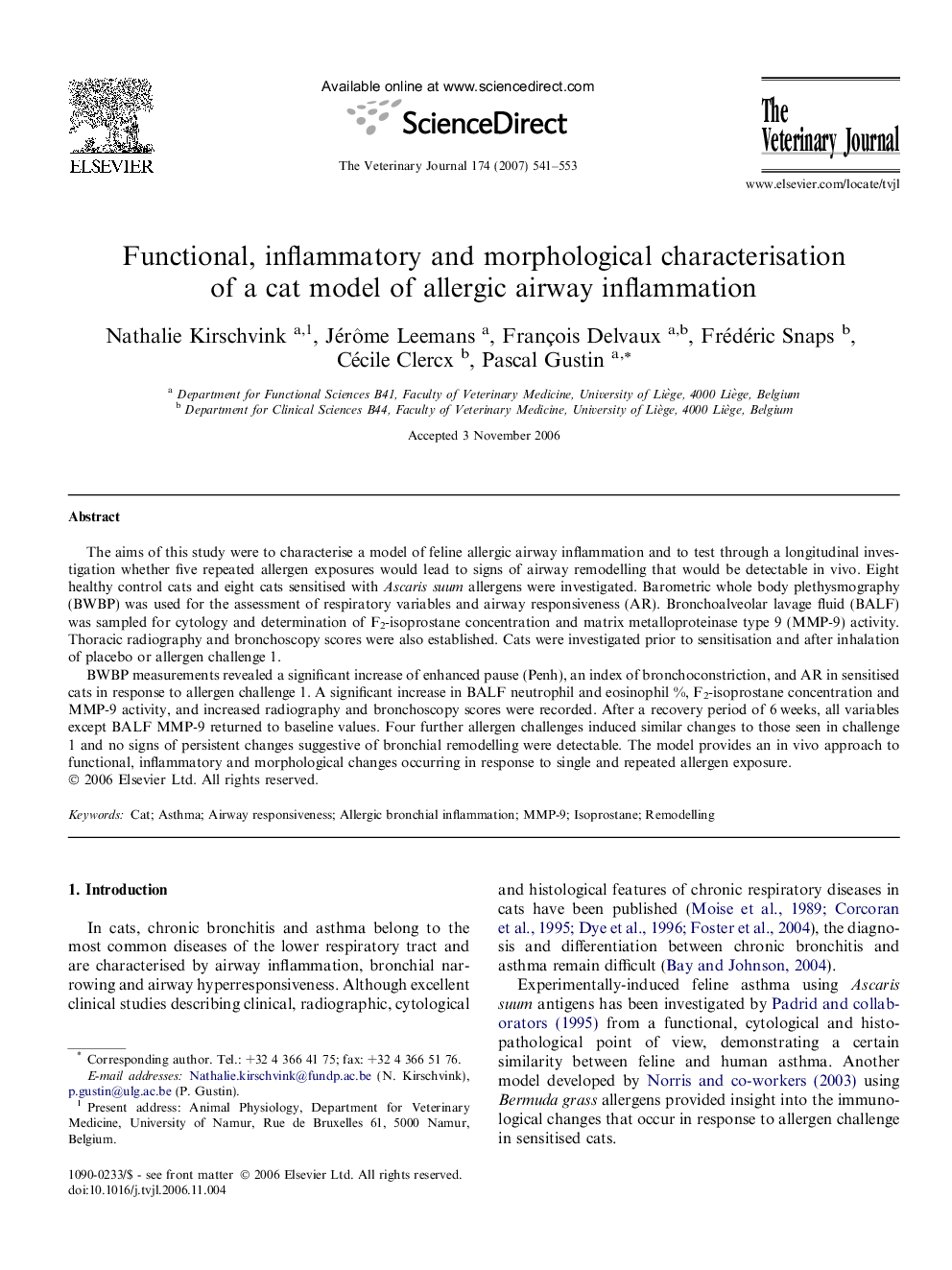| Article ID | Journal | Published Year | Pages | File Type |
|---|---|---|---|---|
| 5799522 | The Veterinary Journal | 2007 | 13 Pages |
The aims of this study were to characterise a model of feline allergic airway inflammation and to test through a longitudinal investigation whether five repeated allergen exposures would lead to signs of airway remodelling that would be detectable in vivo. Eight healthy control cats and eight cats sensitised with Ascaris suum allergens were investigated. Barometric whole body plethysmography (BWBP) was used for the assessment of respiratory variables and airway responsiveness (AR). Bronchoalveolar lavage fluid (BALF) was sampled for cytology and determination of F2-isoprostane concentration and matrix metalloproteinase type 9 (MMP-9) activity. Thoracic radiography and bronchoscopy scores were also established. Cats were investigated prior to sensitisation and after inhalation of placebo or allergen challenge 1.BWBP measurements revealed a significant increase of enhanced pause (Penh), an index of bronchoconstriction, and AR in sensitised cats in response to allergen challenge 1. A significant increase in BALF neutrophil and eosinophil %, F2-isoprostane concentration and MMP-9 activity, and increased radiography and bronchoscopy scores were recorded. After a recovery period of 6Â weeks, all variables except BALF MMP-9 returned to baseline values. Four further allergen challenges induced similar changes to those seen in challenge 1 and no signs of persistent changes suggestive of bronchial remodelling were detectable. The model provides an in vivo approach to functional, inflammatory and morphological changes occurring in response to single and repeated allergen exposure.
